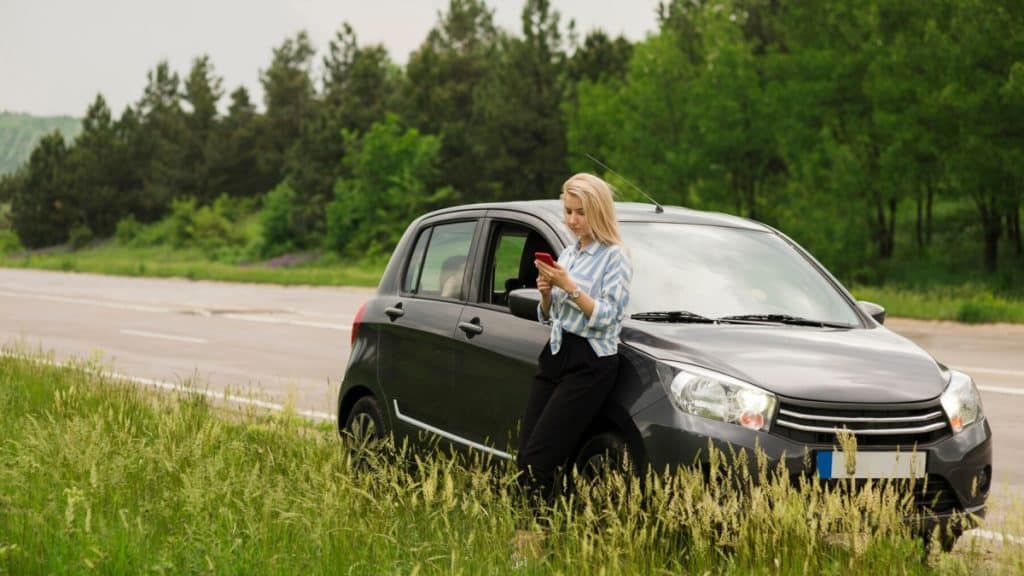Parking on a hill can be tricky for many drivers, especially those new to the road. However, mastering this skill is essential for ensuring your safety and the safety of others. Improperly parked vehicles on a slope can roll downhill, causing accidents or damage.
Here, let’s learn how to turn your wheels correctly when parking on a hill and provide some essential tips to ensure you park safely every time.
Understanding the Basics of Parking on a Hill
When parking on a hill, the primary goal is to prevent your vehicle from rolling downhill if the parking brake or transmission fails. To achieve this, you need to turn your wheels strategically based on whether you’re parking uphill or downhill and whether there’s a curb.
Parking Uphill with a Curb
When parking uphill with a curb, follow these steps:
- Pull up close to the curb and stop.
- Turn your steering wheel away from the curb (to the left).
- Shift the car into park (or into first gear if you’re driving a manual car).
- Engage the parking brake.
Why turn the wheels away from the curb? If your car rolls backward, the wheels will hit the curb, preventing it from rolling further.
Parking Uphill Without a Curb
If there’s no curb when parking uphill:
- Turn your steering wheel toward the edge of the road (to the right).
- Shift the car into the park or first gear.
- Set the parking brake.
In this situation, turning your wheels toward the edge ensures that if the car rolls backward, it will move off the road rather than into traffic.
Parking Downhill with a Curb
For downhill parking with a curb:
- Pull up close to the curb and stop.
- Turn your steering wheel toward the curb (to the right).
- Put the car in park (or reverse gear if driving a manual).
- Set the parking brake.
When the wheels are turned toward the curb, the front tire will rest against it if the car rolls forward, preventing further movement.
Parking Downhill Without a Curb
For downhill parking without a curb:
- Turn your steering wheel toward the edge of the road (to the right).
- Shift into park or reverse gear.
- Engage the parking brake.
This method ensures that if the car starts rolling, it moves away from traffic.
Practicing Hill Parking
Hill parking is a skill that becomes easier with practice. For new drivers, mastering this maneuver might feel daunting, but preparation can make all the difference. A great way to build your confidence is by practicing your skills and understanding the rules of the road through simulated tests.
DMV permit tests help new drivers familiarize themselves with critical driving scenarios, including hill parking. These practice tests are designed to mirror real driving tests, ensuring you’re fully prepared for your license exam. Click here to access practice tests and take the first step toward becoming a confident and responsible driver.
Extra Tips for Hill Parking
Here are some additional tips to help you park perfectly on a hill:
- Always use your parking brake: No matter how steep the hill, engaging your parking brake adds an extra layer of security.
- Check your surroundings: Ensure you’re parking in a safe location where your vehicle won’t obstruct traffic.
- Practice often: Regular practice will help you develop muscle memory, making hill parking second nature.
- Be cautious with manual cars: If you’re driving a manual vehicle, always leave the car in gear when parked on a hill to prevent it from rolling.
- Double-check your positioning: Before leaving your car, ensure your wheels are turned correctly and that the vehicle is secure.
See also: Ensuring Teen Safety in Parking Lots
Final Thoughts
Knowing how to turn your wheels when parking on a hill is a vital skill for all drivers. By understanding the rules and practicing regularly, you’ll ensure your vehicle remains secure in any situation. Remember, safety starts with preparation. Whether it’s mastering hill parking or preparing for your DMV permit test, taking the time to learn and practice will make you a better, safer driver.
Start building your driving confidence today by taking advantage of our DMV permit test preparation resources. Click the link above to get started and pave the way toward a safe and successful driving experience!
